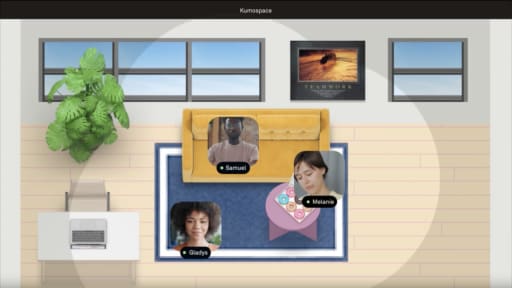Are you weighing the pros and cons of Asana for your team’s project management needs? From navigating the Asana login process to understanding Asana pricing, knowing how the platform works is key to making the right choice. In this article, we break down Asana’s costs across different plans, highlighting features, flexibility, and potential savings for teams of all sizes. We’ll also explore helpful tools, such as the progress bar in Asana, which makes it easier to visualize task completion. And for teams that want to combine project tracking in Asana with real-time collaboration, platforms like Kumospace can create a more connected remote work experience. Whether you’re a solo entrepreneur or part of a large enterprise, you’ll gain clarity on which Asana plan best fits your workflow.
Key Takeaways
- Asana offers a range of pricing plans from $10.99 per user/month for Premium to custom-priced Enterprise plans, providing scalability and a Free Basic plan for personal use.
- Asana’s project management platform facilitates task organization, and collaboration across teams, and provides advanced features such as workflow automation and enhanced security in higher-tier plans.
- Asana allows saving on subscriptions through annual payments and offers special discounts for nonprofits and educational institutions while also providing a mobile app for on-the-go management.
Understanding Asana's pricing structure

Work management platform Asana is a powerful tool that can seamlessly work alongside Kumospace to keep remote teams organized and engaged. While Kumospace fosters collaboration, leadership alignment, and project workflow by enabling teams to share information in real time, Asana connects everyday tasks to bigger business goals. Together, they create a strong foundation for productivity.
Like most modern SaaS platforms, Asana appeals to a wide range of customers. With five distinct pricing tiers, Asana pricing is built to accommodate teams of all sizes and budgets. The entry-level paid plan starts at $10.99 per user per month, with the Asana Premium plan priced at $13.49 per user per month when billed annually; an affordable option for small businesses. If you’re comparing tools, it may be helpful to also review Kumospace’s pricing for a well-rounded perspective.
Asana makes it simple for teams to manage their subscriptions, offering the flexibility to update plans as needs change. This can result in prorated charges or credits, ensuring teams optimize their investment. And with features like the progress bar in Asana, teams can easily track task completion and project milestones at a glance. Getting started is straightforward; just complete the Asana login process, set up your workspace, and begin aligning your projects with organizational goals.
Free plan: Asana Basic
Asana Basic is a free plan designed for personal use. It includes:
- Support for up to 10 users without any cost
- Unlimited tasks
- Calendar view
- List view
- Limited dashboards
It covers the essential aspects of project management without any financial commitment.
Premium plans: Asana Premium and Business
Asana offers the Premium and Business plans for teams desiring advanced project management tools. The Premium plan, starting at $10.99 per user per month when billed annually, is ideal for small and mid-sized teams.
The Business plan, priced at $24.99 per user per month when billed annually, offers additional functions and is aimed at large teams with complex project management needs.
Top-tier service: Asana Enterprise
As your business grows and looks to improve productivity, Asana can grow with you. Large organizations with complex project management needs will find value in Asana’s Enterprise plan. Asana enterprise pricing is customized based on the organization’s requirements, including exclusive features like custom branding and advanced integrations.
The Enterprise plan also offers enhanced security features and custom solutions for large enterprises with very specific needs.
The Value of Asana for Project Management

Asana is not just a project management tool; it’s a platform that facilitates tracking, collaborating, and working with a team on projects. Its cloud-based project management and collaboration features are designed to improve team productivity across various businesses, from small to midsize and large corporations.
Asana’s focus is on simplifying project planning and task management, making it a valuable tool for project managers, team leaders, and stakeholders. The platform includes workspaces that allow teams to organize and focus on specific groups of tasks or projects, thereby aiding in streamlined project management.
Task organization and management
Asana’s interface empowers teams to synchronize work, organize tasks, and build structured plans that clearly define responsibilities, outcomes, and timelines. This clarity enhances efficiency and reduces confusion during project execution, making it a go-to choice for many remote and hybrid teams.
With the ‘My Tasks’ feature, individuals can quickly access everything assigned to them across multiple projects. Whether viewed in list, board, or calendar format, task management becomes more intuitive. Pair this with the progress bar in Asana, and teams gain a visual way to track completion and ensure projects stay on schedule. Getting started is simple; once you complete your Asana login, you can explore these features firsthand and decide which plan best fits your needs based on Asana pricing.
Collaboration across teams
Asana excels at team collaboration. Features including a shared team calendar and file sharing capabilities make it convenient for team members to collaborate on tasks and projects. The Inbox feature serves as a notification center, keeping users informed about project activities and tasks they are assigned to, promoting seamless teamwork.
Advanced capabilities in Asana's higher tiers

Asana’s higher-tier plans, including the Advanced plan, provide advanced capabilities that enhance project management. These plans offer automation capabilities with monthly limits, providing up to 25,000 automations per month. The Advanced plan also supports complex project management with features like lockable custom fields and advanced reporting.
In addition to automation and advanced reporting, the Business and Enterprise plans provide enhanced features such as:
- Advanced search
- Proofing
- An admin console
- Integrations for increased security and coordination
These advanced features are enabling project managers to lead large teams in managing complex projects more efficiently.
Workflow builder and automation
Asana’s paid plans feature the Workflow Builder, a tool that streamlines projects by connecting teams and organizing work. The Workflow Builder allows for:
- Designing custom templates
- Choosing diverse task intake sources
- Tailoring the workflow to specific operational needs
- Automation for recurring tasks
- Identifying and addressing bottlenecks in workflows
Enhanced security and administrative controls
Asana’s enterprise-level offerings go beyond project management by delivering advanced security features designed for large organizations. These include SAML for secure Asana login processes, integration support for data loss prevention, and HIPAA compliance for teams managing sensitive health information.
The Enterprise+ plan strengthens security further with tools like the audit log API, SIEM integration, admin console data exports, and support for eDiscovery, archiving, and advanced data controls. While these top-tier options sit at the higher end of Asana pricing, they ensure enterprises can manage projects with the security and compliance they require. Even at this scale, teams can still rely on user-friendly features like the progress bar in Asana to keep track of project milestones while maintaining peace of mind around data safety.
Maximizing savings with Asana subscriptions

Asana offers various ways to maximize savings on subscriptions. Teams can save money on Asana’s Advanced Plan by opting to pay annually instead of on a month-by-month basis. Additionally, considering Asana’s position against market competitors can serve as an effective discount lever when negotiating contracts.
Negotiating better terms
With a solid understanding of Asana’s market stance and previous deals, teams can effectively guide their negotiation strategies. Preparation involves identifying negotiation angles and styles, which is foundational in knowing how to present your case to Asana effectively.
Adopting the role of the reluctant party often yields more negotiating power, potentially leading Asana to offer better terms.
Nonprofit and education discounts
Asana also offers special discounts for:
- Nonprofits: Nonprofit organizations can receive a 50% discount on Asana subscriptions by submitting a form that attests to their eligibility and commitment to non-discriminatory practices.
- Academic institutions: Academic institutions are eligible for discounted pricing. Contact Asana for more information.
- Eligible organizations: Other eligible organizations can also inquire about discounted pricing. To learn more, contact Asana’s sales team.
Academic institutions can also reach out for special pricing details.
Navigating Asana's user interface

Asana’s interface is structured into five main areas: the sidebar, header, top bar, main pane, and task details pane. Users can personalize their workspace in Asana by customizing the sidebar, reordering sections, resizing, changing colors, starring projects, or teams for quick access, and rearranging or resizing widgets on the homepage.
Asana’s interface offers several features to enhance team alignment, including:
- Centralizing project plans, details, files, feedback, and sharing updates
- Project actions in the header
- Task management in the main pane
- In-depth task details in the task details pane
In-product views and templates
Asana’s recent updates have significantly enhanced the customizability of project views. Users can expand their project views by utilizing the ‘+’ option, adding more flexibility to their project management.
Various views, including list, board, and calendar views, are available within the project management software to suit different preferences. All of these views can be easily shared with other team members on Kumospace
Mobile accessibility
Asana’s mobile applications for iOS and Android offer users the convenience of accessing and managing their tasks and projects anywhere, at any time. Users can access their tasks and engage with their projects even when they are offline, which is particularly useful during travel or when internet connectivity is poor. The Asana mobile app supports integration with various third-party services, enhancing its functionality and allowing users to:
- Streamline their project management process on-the-go
- Collaborate with team members
- Track progress and deadlines
- Receive notifications and updates
- Attach files and documents
- Create and assign tasks
- Set priorities and due dates
With the Asana mobile app, users have all the tools they need to stay organized and productive, no matter where they are. The Kumospace mobile app was recently updated to improve chat and collaboration features.
Alternatives to Asana: Comparing Competitors

While Asana offers a robust and versatile project management platform, there are also other noteworthy alternatives on the market. Tools like monday.com, ClickUp, Kanban, and Jira each bring unique strengths to different workflows. A comparative analysis can help teams decide whether to stick with Asana or consider another platform.
When weighing options, factors such as ease of use, security, and cost are essential. For example, Asana pricing provides flexibility with multiple tiers that scale with team size and feature needs. Once teams complete the Asana login setup, they can immediately take advantage of features like the progress bar in Asana to track projects visually, something that may not be as intuitive in every competing tool.
Asana vs. Monday.com
Monday.com is a management and collaboration tool recognized for having superior task management features compared to Asana. Regarding collaboration features, monday.com offers a more robust set than Asana. However, Asana’s free plan is more accommodating than monday.com’s, which has a restrictive 2-user limit.
Asana vs. ClickUp
ClickUp offers various different task views such as list, board, and calendar, which provide flexibility in task management. Its free tier includes robust features like document sharing and collaboration, adding value for users not ready to commit to a paid option.
It also offers AI assistance for task management and summarizing information, offering additional value at no extra cost.
Tailoring Asana to your needs

Asana’s scalable subscription plans cater to various team sizes and needs, from individuals to large enterprises. Whether you’re a freelancer, small business, or a multinational corporation, Asana has a plan designed to meet your project management needs.
For individuals and small teams
Asana offers a Personal plan suitable for individuals and small teams. It supports collaboration with up to 10 teammates and includes features intended for less complex projects, such as unlimited tasks, projects, and messages, without any costs.
For a more comprehensive feature set, small teams can opt for the Asana Starter plan, which includes timeline view and workflow builder at a cost of €10.99 per user per month when billed annually.
For mid-size to large enterprises
Mid-size to large enterprises will find value in Asana’s Enterprise plans. These plans include features like:
- Advanced admin controls
- Custom branding
- Data export
- Dedicated customer success managers
Large enterprises can negotiate volume discounts or annual contracts, making it more cost-effective for an environment where budget impact is significant.
Summary
In summary, Asana is a versatile, scalable, and cost-effective project management tool designed to support teams of all sizes. With flexible Asana pricing plans, advanced features, and the ability to maximize savings, it stands out as a smart investment for improving efficiency and collaboration. Whether you’re an individual, a small team, or a large enterprise, you can tailor Asana to your specific needs.
Getting started is simple; complete your Asana login and begin exploring its intuitive features. From organizing tasks with ease to tracking progress visually through the progress bar in Asana, the platform equips teams with the tools needed to stay aligned and productive. For organizations seeking a balance of affordability, functionality, and scalability, Asana remains one of the strongest options in project management.
Frequently Asked Questions
Asana is popular because it offers a user-friendly platform that facilitates real-time collaboration and communication, making project management seamless for teams. This allows for easy progress tracking, task assignment, and team communication.
Asana's free plan supports up to 10 users and offers unlimited tasks, projects, and messages. It's a great option for small teams or individuals seeking basic project management tools.
Yes, Asana offers a 50% discount for eligible nonprofit organizations and special pricing for academic institutions. This can help nonprofits and educational institutions save on their use of Asana's services.
Asana, Monday.com, and ClickUp each have unique strengths, with Monday.com known for advanced task management and ClickUp offering a more robust free tier. Consider which features are most important for your project needs. For wider collaboration, Kumospace is the leading way to build small teams and get them working at peak productivity, whatever other applications the business uses.
Yes, you can customize your workspace in Asana by adjusting the sidebar, reordering sections, resizing, changing colors, starring projects or teams for quick access, and rearranging or resizing widgets on the homepage.





